Camera bags. Who knew there would be so much choice? I certainly didn’t as I took my first steps into the world of photography. From small camera shaped bags which perfectly fit the contours of your camera to large wheeled suitcases designed to store and transport a whole range of photographic equipment the choice can be overwhelming. Then, after talking to your photography buddies and reading about pro-photographer’s choices of camera bag you start to wonder if you were naive to think that one camera bag would be just fine.
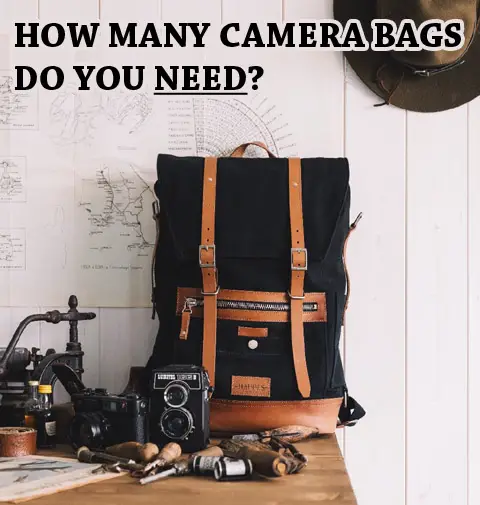
After all, exactly how many camera bags do you need? Not to worry, we’re here to help you figure that out.
Like most things, the answer to this seemingly simple question is in reality, more complex. The short answer would be that you need at least one camera bag that is big enough to store your camera and its lenses. The actual number of camera bags that you need will depend on the size of your camera collection, the type of photography you do, your budget and your personal preference.
Some photographers will prefer to have a bag or case that they store their equipment in while at home and a bag or more for when they go on shoots. Others will just use the same bag for both. Some photographers like those that travel or shoot landscapes and wildlife need a bag that is easily transportable and accessible. Or perhaps they only need to use certain equipment so need a bag that is suitable plus one to store the rest of their equipment back at home. Whereas, portrait photographers may need all their equipment for the shoot and so a fewer number of bags are needed.
What is the Average Number of Bags Photographers Have?
A survey conducted by the Pentax Forum found that most photographers have between 3-6 camera bags. Less than 1% of photographers surveyed owned only 1 camera bag and there were 2 photographers who owned more than 15 camera bags!
There is a general consensus within the photography community that there is no such thing as the perfect camera bag. Instead there are bags that have been designed to suit specific types of photography and situations and specific types of photographers. This has meant that photographers have acquired a collection of camera bags to best suited to their needs.
Those photographers who have multiple camera bags have described how they generally have a “main” bag which they use for storing the majority (if not all) of their equipment and other smaller bags for when they are out and about. A lot of photographers tend to have some sort of backpack camera bag within their collection as these as they can store more than one camera and lenses and are great for when you are on the move.
Type of photography
Long-time photographers have probably worked their way through the many different types of camera bag before settling on their favourites. What they all will tell you though is that there isn’t really one style of bag that is better than another. Plus, what works great for one shoot won’t necessarily work great for the next and this is the reason why photographers end up with multiple camera bags. The different styles of camera bags can be split into two broad categories: active and passive.
Active Bags
Active bags are, believe it or not, best for shoots that involve you being active. They are great because they allow you to easily carry the equipment you need. This means you are more mobile, can respond to your environment quicker and so have a greater chance at capturing that fleeting shot.
Styles of bag that come under the active bag umbrella include backpacks, sling bags, modular systems and shoulder bags.
Passive Bags
These types of bag are best suited for storing all your photography kit when you’re not using it. They are also great for easily transporting all your equipment to and from the shooting location. Passive bags are usually larger and most often come in the form of roller bags.
Most pro-photographers will use a combination of both passive and active bags. Some even transport their equipment to the shoot using a roller bag then use a backpack or a modular system to carry extra equipment such as flash units or extra lenses but cannot carry in their hands.
Which Bags are best for Which Type of Photography?
Whether you shoot mainly portraits or prefer to capture the beauty of the natural world there will be a camera bag that will become your go to bag. Sometimes a combination of bags may work best and other times that one bag you’ve only ever used once before would be perfect for the upcoming shoot. That’s why most photographers have 3-6 bags.
Here’s a rundown on which type of photography the different styles of bag are good for to help you fine tune your collection.
Backpacks
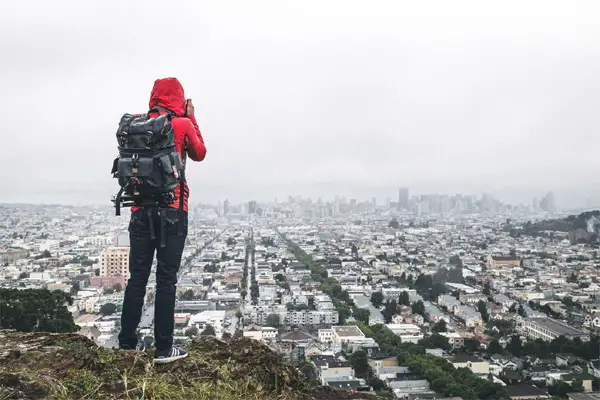
A staple of most photographer’s backpacks and are great for those on the move. These types of bags are ideal for those shooting landscapes, wildlife and travel photography.
Pros
- Frees up your hands for your camera, using your phone or to quickly change lenses.
- The weight is evenly distributed to both shoulders and lower back (some backpacks even come with waist straps for extra support).
- Great for storing your gear when not in use.
- Varying levels of capacity to suit your needs, from full backpack to backpacks with compartment for camera equipment and compartments for personal items.
Cons
- As its on your back the contents can be slow to access
- Can be too heavy especially if you fill the entire backpack and are carrying it all day.
For a backpack that will carry both your camera gear and a small laptop check out the Lowepro ProTactic BP 350 AW II.
Roller Bags
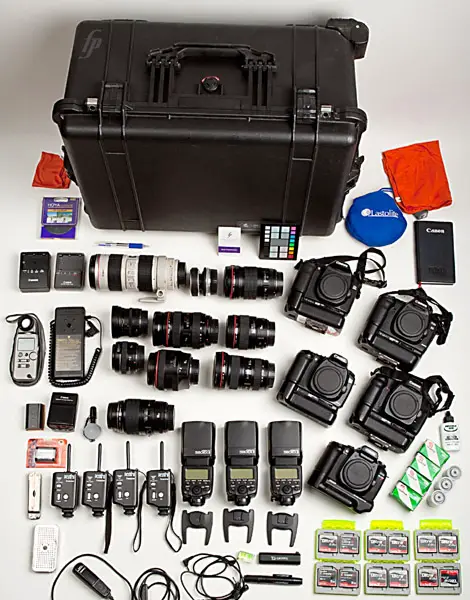
Found both in soft and hard case varieties, these types of bag are great for storing your gear while not in use and for transportation. Roller bags are ideal for those photographers who are shooting in one place such as portrait and some events such as weddings.
Pros
- They can carry a large amount of camera gear
- The wheels make it super easy to transport your gear
- They are usually larger than most other bags which makes them great for storing all your gear in one place.
Cons
- Not great if you need to move around a lot while on a shoot
- Need somewhere secure to be left when not in use
For a carry-on friendly roller bag that will store and protect all your gear try the Manfrotto Pro Light Reloader-55.
Modular Systems
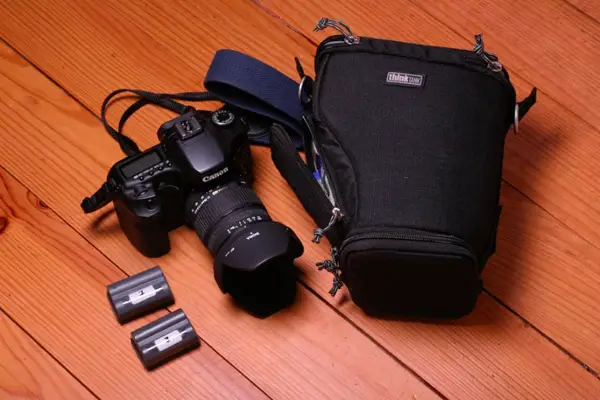
The smallest type of camera bags, these come in a variety of different shapes and sizes. With either a waist belt style or shoulder strap option these bags generally only allow you to carry a single camera and maybe an extra lens.
Modular systems are great for those on the go photographers who need to be super mobile. They are ideal for travel and street photography as well as some events such as parades.
Pros
- Provide the most mobility
- Pouches that attach to a waist belt relieve the weight from shoulders and back and transfer to the waist.
- Great for carrying extra pieces of equipment such as spare batteries, memory cards and flash units without the need for a bag on your back.
If you’re tired of carrying camera bags around but still want the flexibility of carrying extra pieces of equipment then the Lowepro S&F Deluxe Technical Belt is right up your street.
Sling Bags
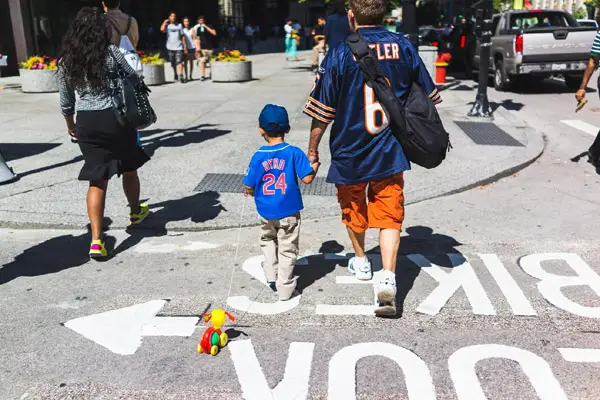
Slings bags are a hybrid between a backpack and shoulder bag and sit on your back with a single cross strap. They bring the ease of access that a shoulder bag has but with the comfort of a backpack. They are ideal for shooting landscapes, events, travel and street photography. A great example is the Tenba Solstice Sling bag which allows you to carry both your camera, 2-3 lenses and a 10inch tablet.
Pros
- Are more comfortable than a shoulder bag when using over a prolonged period.
- Make accessing your equipment quick and easy.
- Great if you’re only taking a small amount of equipment with you.
Cons
- Generally, can’t carry as much as a backpack.
- All the weight is focused on one shoulder and lower back.
Shoulder Bags
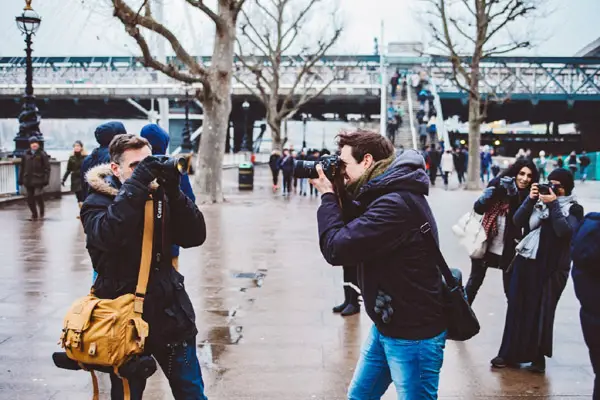
Shoulder bags are the traditional camera bag and often the first style of bag a new photographer will opt for. Perfect for those photographers who need maximum mobility but with more equipment than a modular system will allow.
Ideal for travel, street, and some landscape photography.
Pros
- Easy access to your equipment – it’s by your side.
- Bags often just look like a regular shoulder bag and not a camera bag making it easier to blend in.
- There are varying sizes to fit your needs
- Can be great to store your gear when not in use especially for those just starting out who may not have many extra lenses or accessories yet.
Cons
- All the weight is on one shoulder which may become uncomfortable and possibly bad for your body in the long term after a while.
- Not really suitable if you want to carry larger lenses (greater than ~200mm) around.
Shoulder bags are often the most stylish of the camera bags and can even be mistaken for a normal bag which is great if you’re wanting to blend into your surroundings. Check out the Peak Design Everyday Messenger bag for both style and practicality.
There is no right or wrong answer to how many camera bags you need. Instead you should really be asking does the camera bag(s) that I have meet my photography needs? If the answer is no then perhaps its time to invest in a new bag that fills the gaps that your current collection leaves. I hope that this article has helped you in answering this question.
Click this link to learn what to put in your camera bag.









1 comment